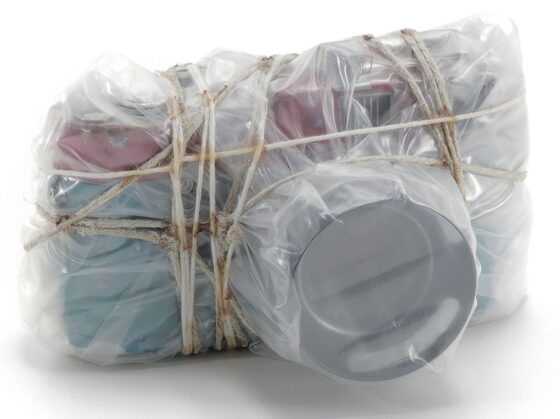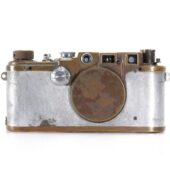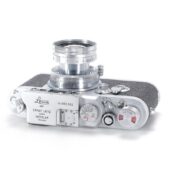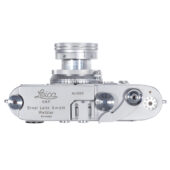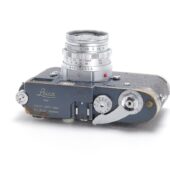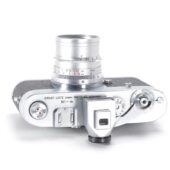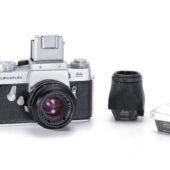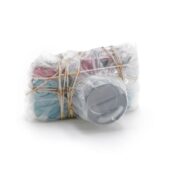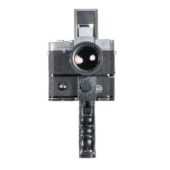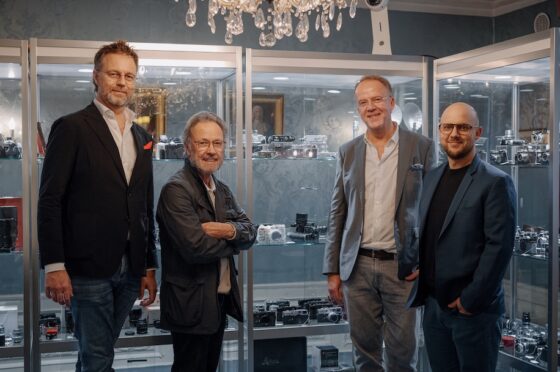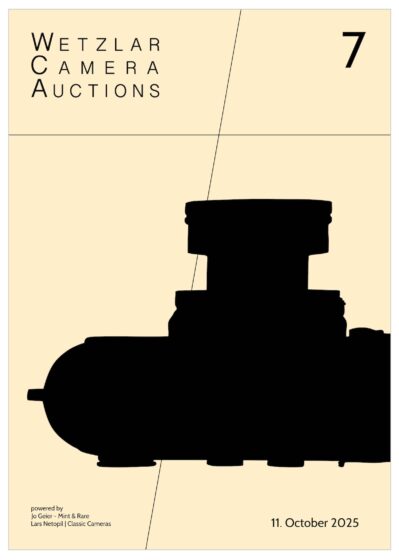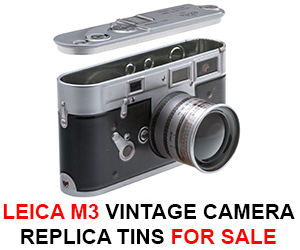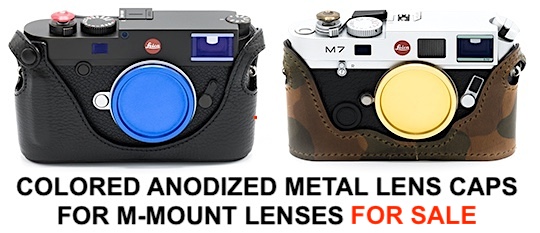The results from the latest Wetzlar Camera Auctions #6 are out:
Christo’s wrapped Leica sold for EUR 212,500:
Christo’s “Wrapped Leica” camera to be part of the next Wetzlar auction in October 2024
Leica highlights from the upcoming Wetzlar Camera Auctions 6 on October 12, 2024
Additional information:
Top prices for historic Leica cameras at auction in Wetzlar
Christo´s WRAPPED LEICA sold for EUR 212,500
Wetzlar (wca). At the sixth auction by Wetzlar Camera Auctions (WCA) for historical cameras and accessories, a total of 248 lots were auctioned last Saturday. The majority of these were Leica cameras.
Right at the start of the auction, lot number 2, achieved an extraordinary result. A Leica model A with Anastigmat lens from 1924 was finally sold for EUR 112,500 after a starting price of EUR 40,000. This one hundred years old Leica camera was produced still before Leica´s market launch at the Leipzig Spring Fair in 1925. Only the very first 150 pieces of the production Leica camera were made with Anastigmat lens, before the lens´ designation was changed to “Elmax” (later “Elmar”), most got transformed or upgraded in later years.
“We guess that there are less than 25 pieces of the Anastigmat Leica still in existence, in their original delivery condition,” emphasized WCA co-owner Lars Netopil (Wetzlar).
The camera came from a European collection and was in an extremely beautiful and original condition.
Some astonishing results were once again achieved for particularly rare items.
The “first die-cast camera” (earliest prototype of the Leica IIIc from 1934) still from the desk of Leica inventor Oskar Barnack was finally sold for EUR 562,500 after a starting price of EUR 160,000. The camera was the first experimental Leica camera, equipped with a rear door that opens upwards, as well as a fold-out rewind crank – details that were not introduced commercially until the Leica M3 (1954) and M4 (1967).
Other unusually high results were achieved for experimental Leica cameras from the 1950s: A Leica IIIg prototype with internal frame counter from 1956 was sold for EUR 375,000 after a starting price of EUR 80,000 and a Leica M3 prototype from 1953 fetched EUR 300,000 after starting at EUR 80,000.
Spectacular results were also achieved for rare Leica M cameras specially produced for the U.S. Military: A very rare Leica M2 in gray-blue laquer finish from the U.S. Air Force was sold for EUR 325,000 – only 20 pieces of this camera were produced in 1960. An extremely rare Leica MS in hammertone gray finish fetched an impressive EUR 562,500 – just ten pieces of that version were produced for the U.S. Navy during the so called “Cuban Missile Crisis” in 1964.
WCA co-owner Jo Geier (Vienna): “Compared to the serial production versions, some of the military Leica models were produced in extremely small quantities only. Further, they often were carried out in special finish versions or even in a different construction, due to their special military application. This explains why the Military Leica cameras are a fascinating field for some collectors and why we see exceptionally high prices sometimes achieved in this area.”
A true highlight of the WCA catalogue this time was Christo´s “WRAPPED LEICA” from the provenance of Christo-photographer Wolfgang Volz, who was also present in the room during the auction. After Volz had used the camera for several official documentations of Christo projects, Christo wrapped the camera as a present to “his” valued photographer and so the camera became a wrapping object itself.
Lars Netopil: “For us, to have a Leica camera that is same an item for camera collectors as well as an important piece in the art market, was something entirely new. We are extremely happy that with a sales price of EUR 212,500 this piece went for well the double of its estimate”.
Rare Leica lenses once again made up a particularly interesting section in the auction catalogue this year. A very early prototype of a Leica lens in M bayonet mount from 1949 was sold for an astonishing EUR 175,000. A sample unit of the Leica APO-Summicron-M 50 mm ASPH. to the unique “Leica M for (RED)” that started at EUR 12,000 finally went for incredible EUR 375,000 after an exciting bidding war.
Besides Leica, some particularly spectacular results were achieved for collectibles in photographica of other brands. Of which, some very rare pieces were produced in the former Soviet Union. An extremely rare Leningrad space camera with two matching lenses from 1967 was sold for EUR 42,500.
“Space is a field fascinating to many collectors. Besides the Hasselblad space cameras used by NASA, the cameras from the former Soviet space programs are exceedingly rare. If they turn up for sale at auction, always very high prices can be expected,” says Jo Geier.
Wetzlar Camera Auctions’ next auction will take place on October 11, 2025. Consignments are being accepted immediately. Information at www.wetzlarcameraauctions.com.
